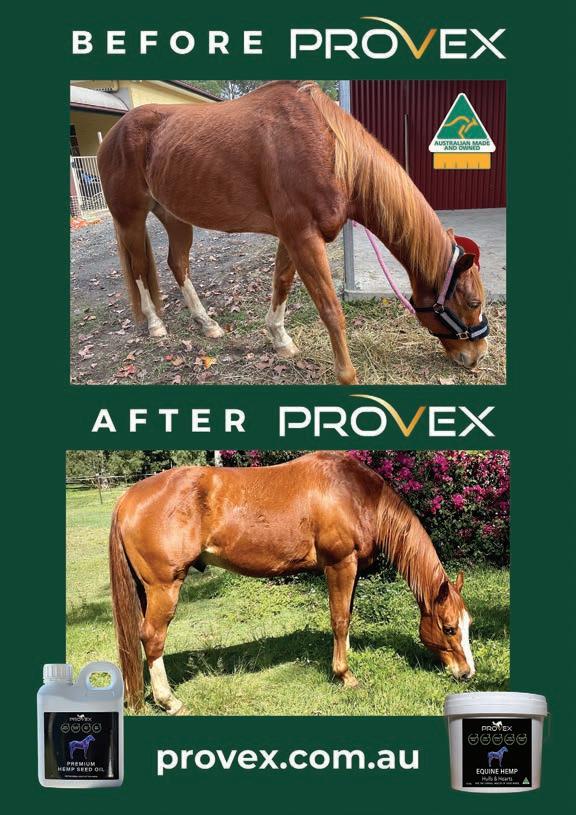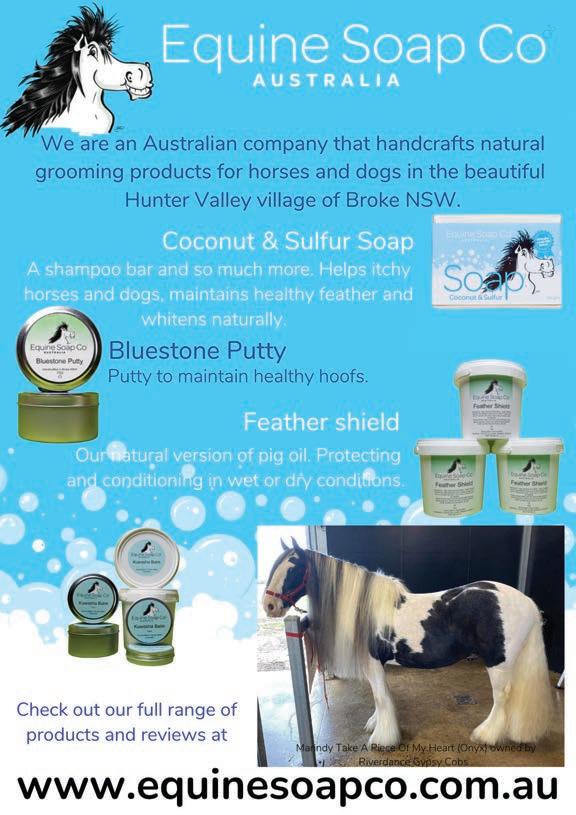
3 minute read
SKIN DEEP
By Amy Snow and Nancy Zidonis
Beauty is deeper than “skin deep.” Your horse’s lustrous, shiny, healthy skin and coat come from inside out. In Chinese medicine, we know that when chi (life-promoting energy), blood and other vital substances are flowing harmoniously throughout the horse’s body, we can see it on the surface of his body. A rich, shiny coat reflects how well his internal organs are functioning.
Skin is like a huge lung because skin actually breathes and removes more gaseous toxins from the horse’s body than through his breath. Skin is approximately 6% of the horse’s overall body weight. Skin is the intermediary organ between the environment and the underlying tissues and organs. As an essential component of the animal’s immune system, the skin is the first line of defense from the elements.
Unfortunately, horses often fall prey to adverse skin conditions such as allergic reactions to insect bites, fungal and/or bacterial infections due to environmental factors, as well as more serious skin cancers. Additionally, stress, over-clipping, over-blanketing, and lack of grooming can impact our horses’ skin health. As horse guardians, it is up to us to be constantly vigilant and aware of how our horses’ skin and coat look and feel. Watch for bumps, lumps, rashes, infections, dry skin – these are telltale signs that your horse’s skin is compromised.

Chinese Medicine
From a Chinese medicine perspective, prevention of adverse skin conditions is the key to shiny, gleaming, healthy skin and coat. For the horse’s skin to be well-nourished, chi, nutrient rich-blood, and body fluids must circulate throughout his entire body. For this to occur, all the internal organs must be working in concert.
In accord with Chinese medicine pathology, the Lung is directly responsible for the health of the skin. However, all the organs must be functioning properly and optimally to support the Lung’s capacity to maintain the skin’s strength, moisture, and flexibility needed to protect the body from external elements.
For instance, the Heart must circulate warm, nutrient-rich, moist blood to the surface of the horse’s body to nourish the skin. The Stomach, along with all the other organs along the gastrointestinal tract, must break down food substances into bio-available nutrients and body fluids to create blood for the Heart to generate warmth and circulation. The body is an integrated whole and each internal organ contributes to healthy skin in some manner.
Acupressure Session
After thousands of years of clinical observation, traditional Chinese medicine doctors determined that there are acupressure points, also called “acupoints,” known to enhance the richness and circulation of blood to specifically nourish skin and superficial tissues. You can offer your horse an acupressure session using the “Nourishing Skin Acupressure” acupoint chart two times per week to support healthy, protective skin.

Amy Snow and Nancy Zidonis are the authors of ACU-HORSE: A Guide to Equine Acupressure, ACU-DOG: A Guide to Canine Acupressure and ACU-CAT: A Guide to Feline Acupressure. They founded Tallgrass Animal Acupressure Resources offering books, manuals, DVDs, apps, meridian charts. and consulting services. Visit: www.animalacupressure.com Email: tallgrass@animalacupressure.com




